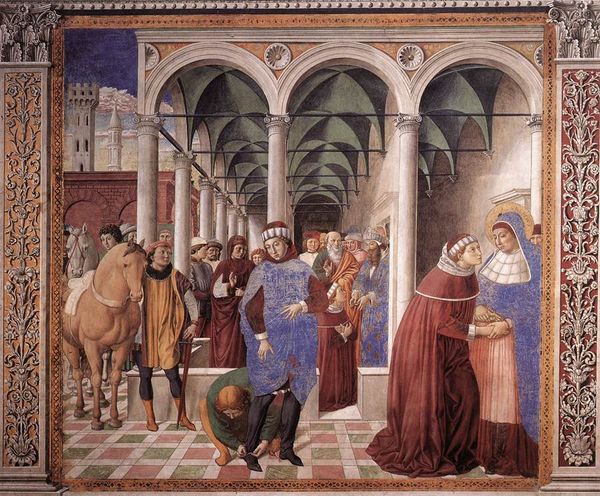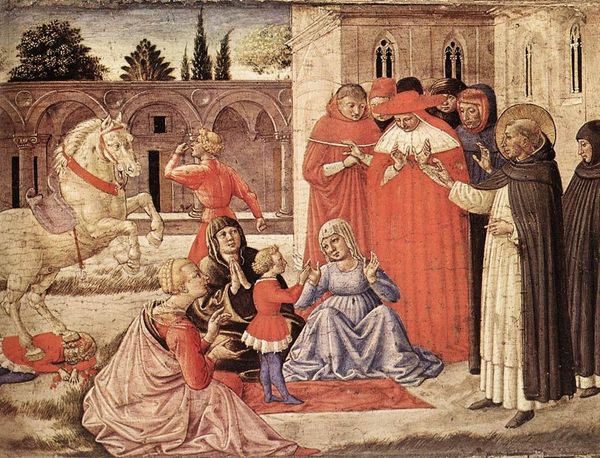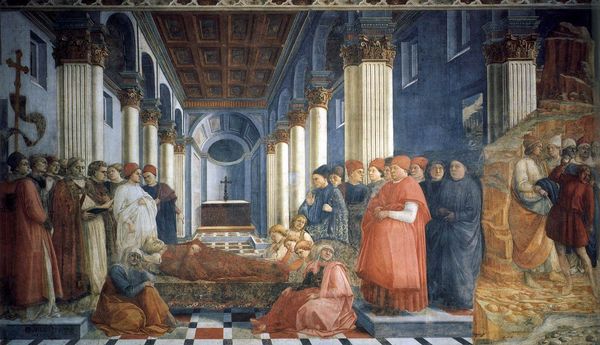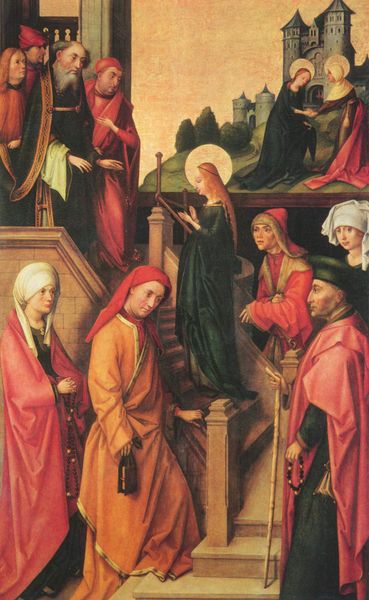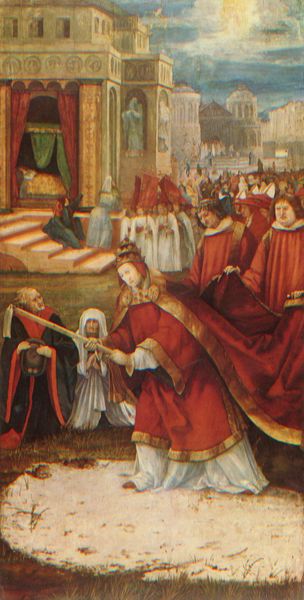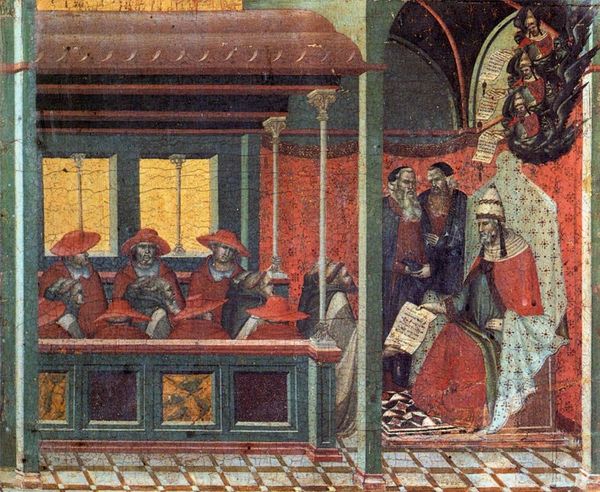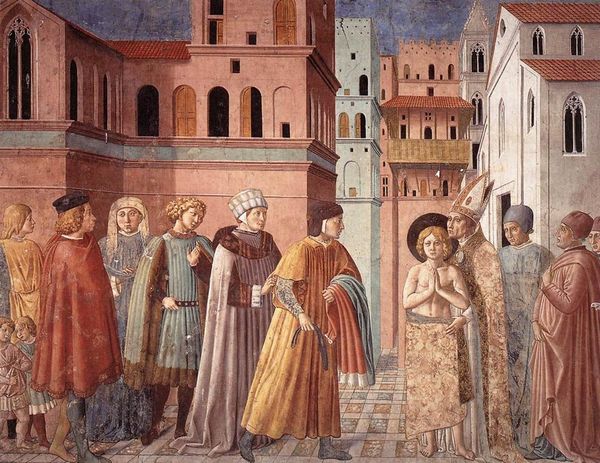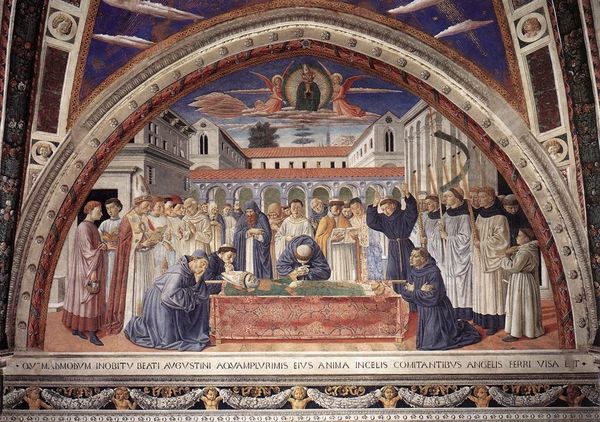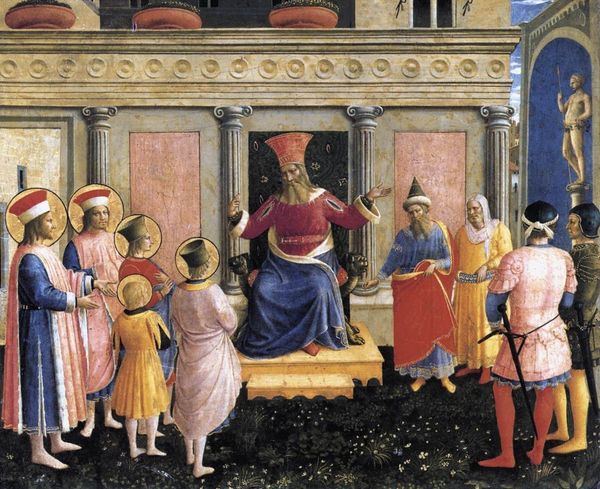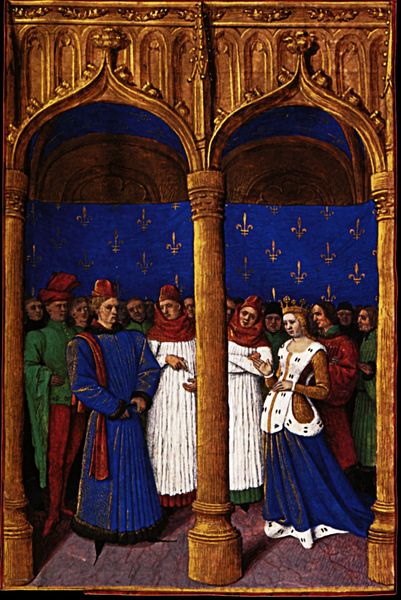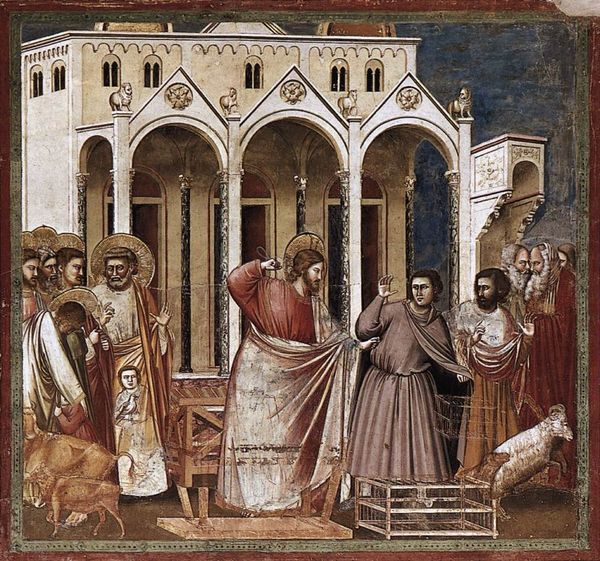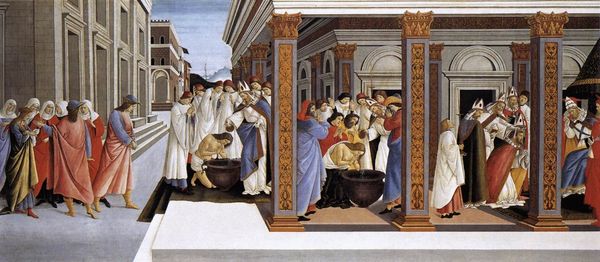
Etienne Chevalier (1410-74) and his Patron Paying Homage to the Virgin and Child 1460
0:00
0:00
jeanfouquet
Musée Condé, Chantilly, France
panel, painting, oil-paint
#
portrait
#
panel
#
painting
#
oil-paint
#
11_renaissance
#
oil painting
#
classicism
#
genre-painting
#
history-painting
#
early-renaissance
#
miniature
Dimensions: 16.5 x 12 cm
Copyright: Public domain
Curator: Before us is Jean Fouquet's panel painting, "Etienne Chevalier and his Patron Paying Homage to the Virgin and Child," created around 1460 using oil paints. It currently resides in the Musée Condé, in Chantilly. Editor: The chill of that marble architecture just hits you, doesn't it? The angular planes, those piercing blues and whites... it creates such a distanced reverence. Curator: Let's delve into that architectural structure. Fouquet's composition meticulously uses line and form, the cold, carved pillars contrasting with the soft drapery of the figures. Notice the tiled floor receding into a perfectly rendered perspective. The semiotics are fascinating; the hard stone of earthly power against the angels hovering above. Editor: The figures kneeling within that rigid structure fascinate me more. I see Étienne Chevalier's position as emblematic of the patronage system, a visualization of societal power and male privilege in the Early Renaissance. Fouquet isn’t simply portraying piety. Curator: But Fouquet uses visual tools to explore deeper ideas! Consider the textures. The smoothness of the angel's skin and their elongated fingers and necks alongside the woolly, weighty fabrics— Editor: Textures also convey symbolic weight. The rich brocades Chevalier wears denote worldly wealth and power. It speaks to the complexities of navigating religious faith within secular ambition. This isn’t just about formal execution; it reflects socio-economic dynamics. How could this be anything BUT a meditation on inequality when class is built into its core elements? Curator: Indeed. But within those power dynamics, Fouquet captures minute, masterful realism of light. Editor: Absolutely, a master class. Thinking about this depiction of the Madonna… It has interesting historical precedent! Was the Madonna's likeness meant to echo that of Agnès Sorel, Chevalier’s contemporary? Did this decision speak to class aspirations and politics, too? The visual language tells us a lot. Curator: Yes, it raises such intriguing ideas, these formal portraits speak to complex elements of the patrons and society of the time. Editor: This discussion encourages considering artworks as multifaceted, as rich texts reflecting cultural currents. Hopefully listeners will reconsider other works within the larger framework.
Comments
No comments
Be the first to comment and join the conversation on the ultimate creative platform.
